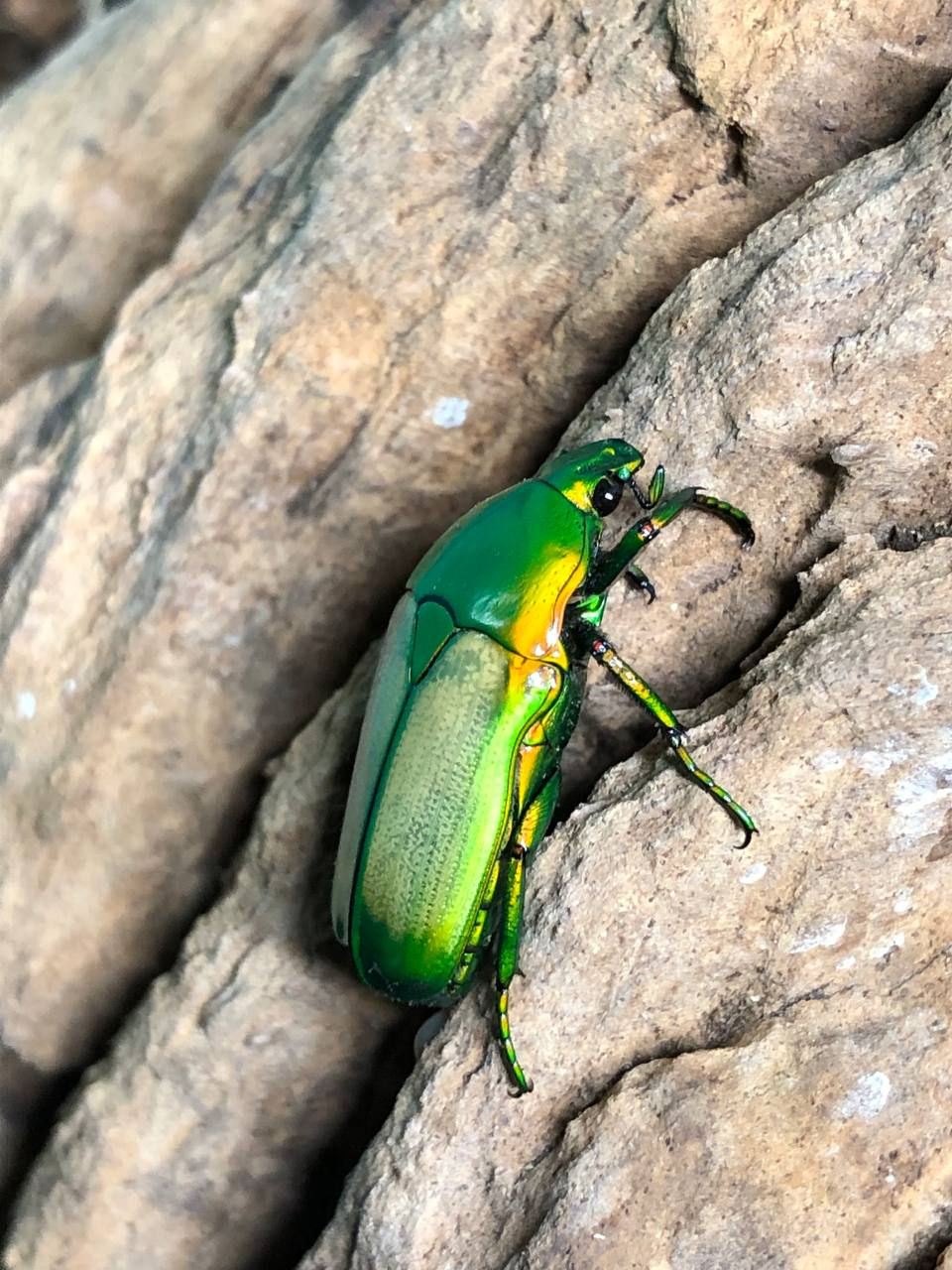Thorny Stick Insects (Aretaon asperrimus) PSG 118 - Nymphs / Juveniles / Adults
About A. asperrimus:
- Possibly one of our favourite stick insect species just simply because they look like they're wearing spiky armour! A very docile species that prefers to spend most of the daytime hiding behind pieces of bark, blending in with their brown and yellow colouration.
- Females will lay their eggs in substrate using their ovipositor, so it’s important to have a deepish dish of soil at the bottom of the enclosure that you can remove and routinely freeze and replace. This keeps on top of eggs, but if you do incubate some then they will hatch between 2-6 months, with 4 months being the average time.
- Adult size: males 5-6cm, females 8-9cm
- Lifespan: approx. 1 year
- Status: captive bred
- Place of Origin: Sabah, Borneo
- Parthenogenetic: No
- Temperature: 20-24˚C
- Humidity: 60-80%
- Diet: Ivy, Bramble, Rose, Raspberry
Special requirements: prefers to hide under bark pieces and females need a pot of substrate to lay their eggs
- We like to keep our stick insects around 20-22˚C and humidity ranges between 70-80%, but these will do just fine at average room temperature so long as the humidity is kept in the higher ranges which aids the molting process. Enclosure size should be at least 3 times the length of the body of the insect in height, and at least 2x the length of the insect in width. If housing different species together, use the largest individual as a guide. Around 5-10 individuals will live together just fine in a 60cm x 30cm enclosure.
- We use a mesh enclosure, like the ones designed for keeping butterflies, as we find the mesh provides excellent cross-ventilation. As these invertebrates are arboreal, its important to try and replicate these conditions in captivity. Alternatively, a tall glass or plastic enclosure can be used if it has adequate ventilation, and humidity can be maintained by mist spraying the enclosure once a day. We add a variety of hardwood branches as décor and to provide a more natural, enriching habitat. This species likes to dwell under bark during the day and needs soil or damp sand to lay eggs.
- We like to line the floor of the enclosure with some paper towels which catch the faeces and absorb excess moisture, reducing the chances of mold. The light colouration of the tissue also helps with spotting eggs and differentiating them from droppings. Once a week we replace the tissue and soil and separate out eggs from poo. It is important to mention that we only collect as many eggs as we can care for, the remainder are frozen to prevent hatching. Eggs can be incubated in moist sphagnum moss at 20-22˚C and can take between 2-6 months to hatch.
- We like to gather our own foodplants for our stick insects from local parks and forests which we know are safe and have minimal or no pesticide use. We suggest picking branches with leaves that are away from the main path, higher than ground level, and are healthy and free from signs of fungal infections and disease. Generally, if the leaves are green, intact and have other little critters living on them, then you are good to go!
- We cut the branches at a length that is 10cm or so less than the height of the enclosure which ensures there is a suitable gap at the top for stick insects to molt. The branches are soaked in water for 15-20 minutes to remove any surface debris and hitchhikers. The end of the branches are placed in a jar of fresh water to keep the cuttings fresher for longer. We push some paper towel into the top of the jar to close off the opening which prevents any smaller stick insects from drowning, but you can also use sponges and non-spill paint pots. Once a week we replace the branches with fresh ones, but this can vary for different hobbyists.
PriceFrom £7.99
20% BLACK FRIDAY INVERTS SALE
























